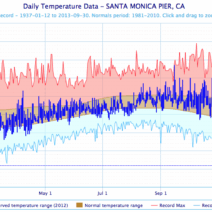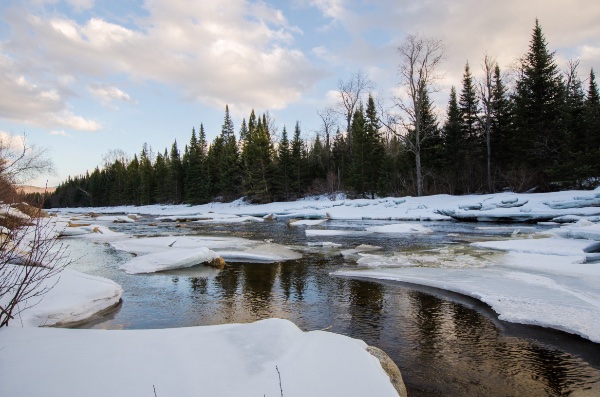Maine, a state often likened to a painter’s palette, is adorned with hues of deep ocean blues, verdant forests, and the warm rusts and golds of autumn foliage. Nestled in the northeastern corner of the United States, Maine’s climate is a unique tapestry woven from maritime influences and a rich, rugged landscape. Known for its iconic rocky coastlines and crisp autumns, the climate here encapsulates a dichotomy between the soft embrace of summer and the stark beauty of winter.
To understand the climate of Maine, one must first appreciate its geographical nuances. Bordered by the Atlantic Ocean to the southeast, the state’s coastal region enjoys a climate that is moderated by the ocean’s temperate embrace. Summers are typically warm, yet the last vestiges of maritime influence prevent the heat from becoming oppressive. The cool, salty breezes from the sea sweep across the shore, creating an environment that is both refreshing and invigorating.
As one journeys inland, the landscape shifts dramatically. Here lies a tapestry of lush, sprawling forests that experience a shift in climate characterized by an increase in continentality. Winter’s icy grip intensifies, and the transition leads to considerably colder temperatures. The contrast between the rugged coastline’s mild winters and the snowy interior’s frigid conditions is striking, resembling a theater stage where every season plays its role to perfection.
In summer, the coast transforms into a vibrant playground. Lobster shacks buzz with life as tourists mingle with locals, indulging in the fresh catch of the day. Warm, sunny days stretch lazily, inviting beachgoers to bask in the golden sunlight that glimmers off the Atlantic waves. This spirited ambiance captures the essence of summer’s exuberance in Maine, painting a picture of bliss that is punctuated by the inviting aromas of ocean air mingled with salt and pine.
However, as summer gracefully wanes, a metamorphosis takes place. The foliage ignites into a riot of color by late September, heralding the arrival of autumn. Maine’s forests are renowned for their breathtaking kaleidoscope of colors, where each tree stands as a sentinel in a procession of red, orange, and yellow. This spectacular display, known as the foliage season, draws visitors from around the globe, eager to witness nature’s capricious artistry. Autumn in Maine is a season of both another kind of harvest and reflection, where the air grows crisp and the scent of fallen leaves permeates the atmosphere.
As the days shorten and temperatures dip, the chill in the air invites cozy gatherings around wood-burning stoves. Apples are harvested, and pumpkin patches dot the landscape as communities celebrate the bounty of the season. The idea of a Maine autumn conjures up images of apple cider jugs, hayrides, and the impeccable stillness that descends upon the state. The crunch of leaves underfoot echoes like a symphony, while the sun sets with a golden glow that scintillates against the backdrop of the changing leaves.
In contrast, winter casts a long shadow over Maine. The state becomes a showcase of harsh beauty, where the icy breath of the north descends. Snow blankets the ground, transforming serenity into a monochrome canvas. The frigid air invigorates the spirit while fostering a sense of solitude and contemplation. Outdoor enthusiasts embrace this brutal beauty, flocking to the mountains for skiing, snowboarding, and snowshoeing. The frigid landscape invites an exploration of its wintry wilderness, making way for a unique form of recreation that is synonymous with Maine itself.
Yet, it is not merely the picturesque scenery that defines Maine’s climate; it is also a battleground for understanding climate change’s broader implications. The intermingling of warm ocean currents with cold air masses creates a distinct atmosphere that plays a vital role in local ecosystems. However, the effects of global climate shifts are palpable in Maine. Rising sea levels threaten its iconic coastlines, while shifting weather patterns disrupt the delicate balance of its wildlife. The autumn leaf-peeping tradition itself is at risk, as variations in temperature may alter the timing of the foliage season, challenging the very fabric of Maine’s identity.
In the realm of ecosystem balance, the delicate interplay between seasonal transitions fosters rich biodiversity. The rich tapestry of forest life nurtured by Maine’s varied climate is home to creatures big and small, from moose to migratory birds that paint the skies as they travel to warmer climes. Their cyclical patterns intertwine with the climate’s rhythm, creating a harmonious existence that is foundational to the state’s ecological identity.
As one contemplates the climate of Maine, it becomes evident that this state is a testament to the resilience of nature. Each season offers a unique narrative that shapes the land and its people. Rocky coastlines bearing the weight of crashing waves tell tales of endurance, while crisp autumns remind us of the beauty in transition. Together, they form a landscape that is forever changing, yet steadfast in its ability to inspire awe and reflection.
Ultimately, the climate of Maine serves as both a backdrop for adventure and a reflection of the urgent imperative to safeguard and conserve. In a world increasingly affected by climate change, Maine stands as a reminder of nature’s fragility and the importance of stewardship. The rich hues of autumn, the icy stillness of winter, and the warming embrace of summer call us to act, to cherish, and to protect this stunning spectrum of seasonal beauty.








